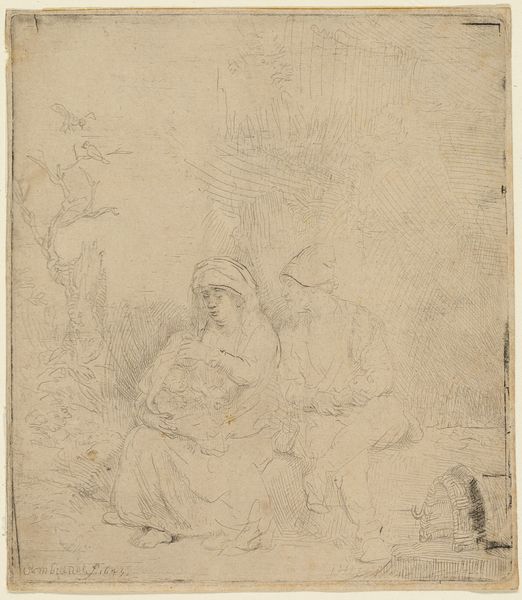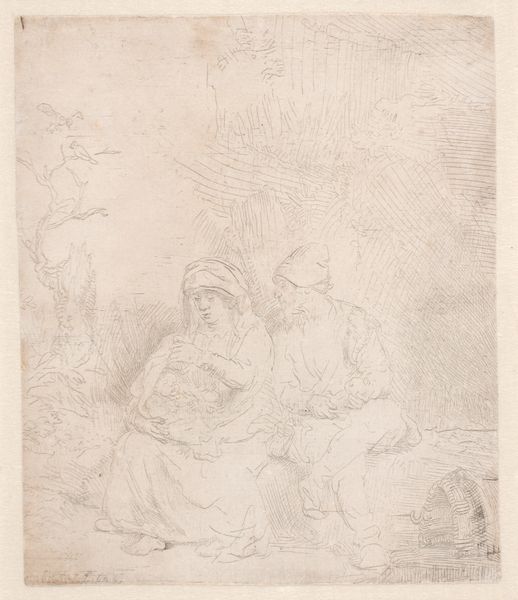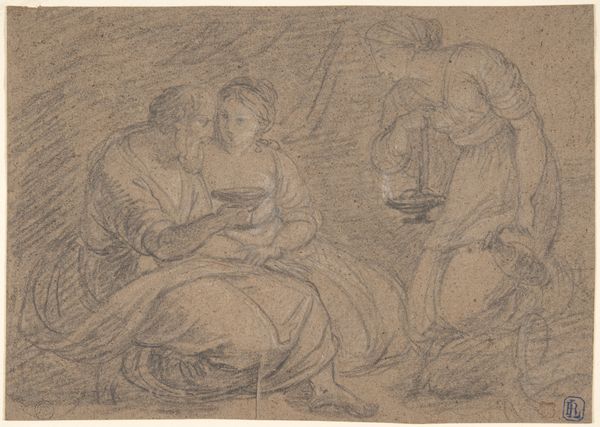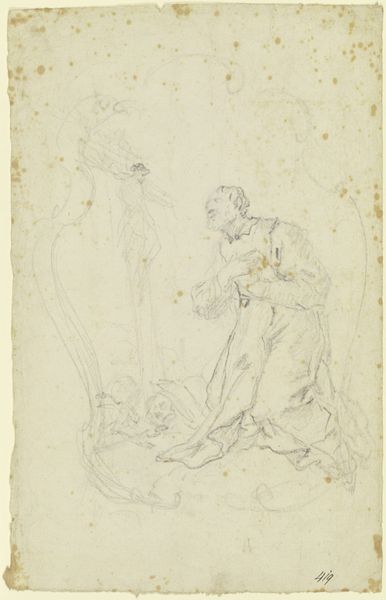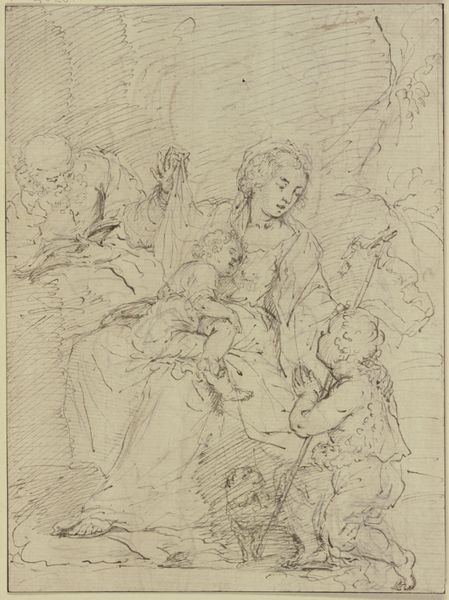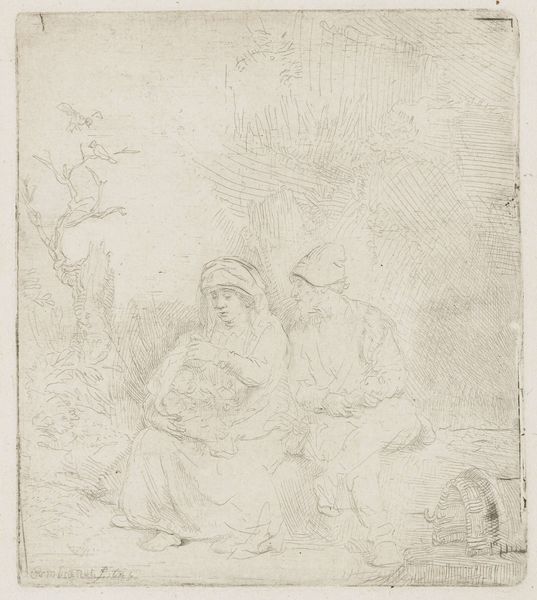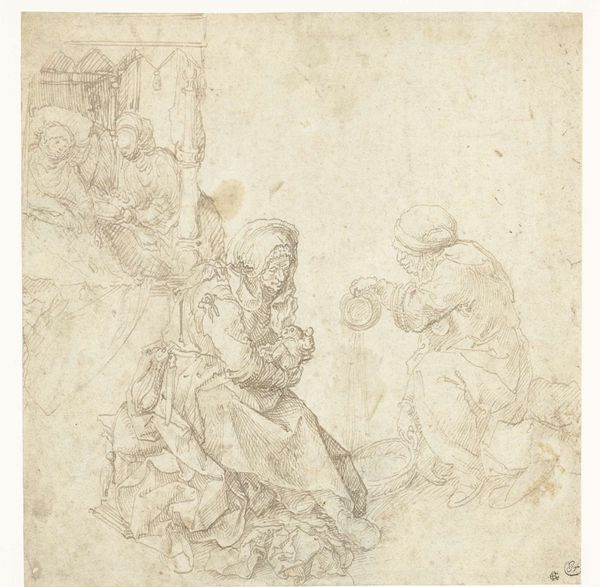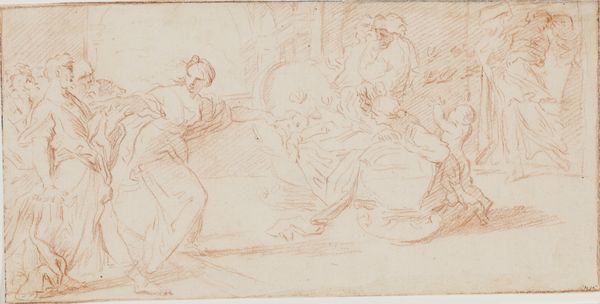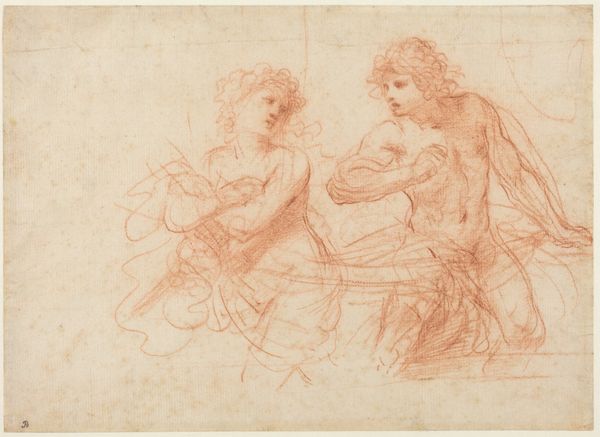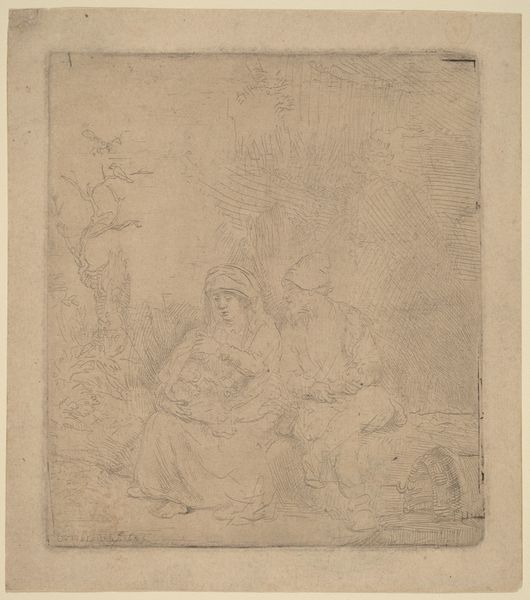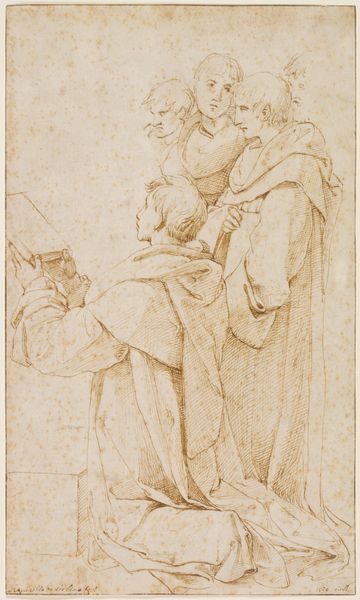
Sketches of Virgin and Child, Seated Figure, and Landscape c. 1530
0:00
0:00
drawing, print, paper, ink, pen
#
portrait
#
drawing
# print
#
figuration
#
paper
#
11_renaissance
#
ink
#
pen
#
history-painting
#
italian-renaissance
Dimensions: 170 × 185 mm
Copyright: Public Domain
Curator: This is "Sketches of Virgin and Child, Seated Figure, and Landscape," a pen and brown ink drawing on paper, created around 1530 by Vincenzo Tamagni, currently residing here at the Art Institute of Chicago. Editor: There's a lovely tenderness to the Virgin and Child sketch, though the entire sheet feels quite… fragmented. A bit ghostly, almost, given the spareness of the lines. Curator: The fragmented nature speaks to its function, really. These aren't finished compositions but rather preparatory studies, giving us insight into Tamagni’s process. Note how the use of readily available and affordable materials like pen, ink and paper meant a wider dissemination of ideas within the artistic workshop. Editor: I see. So, it gives insight into workshop practice, demonstrating how an image was broken down and considered from different perspectives before reaching its final painted form? Also, its interesting the contrast between a religious subject sketched, on a quite humble support such as paper instead of other noble material. Curator: Exactly. Think of the politics of imagery, too. Depictions of the Virgin and Child were not simply acts of pious devotion, but visual statements of power and religious authority within a very specific socio-political climate of renaissance. The materials used were, therefore, essential to convey this significance through the means of production. Editor: That makes the loose quality of the landscape sketch even more intriguing. Was this part of a larger commission or possibly a standalone exploration of form? It looks to me a quick, abstracted composition and so freely! Curator: Probably just Tamagni working out the background for a painting. However, those informal landscapes did become increasingly popular in their own right, influencing how artists conceived of the natural world in later periods. The role of artistic training at that period would certainly condition this image reception in a completely different way from nowadays. Editor: It’s fascinating to see such a direct link between artistic practice and social currents expressed through a humble, but still evocative work on paper. Thanks for pointing out those important connections. Curator: Absolutely. It underscores how even seemingly minor works on paper play a crucial role in the ongoing dialogue of art history and its place in material culture.
Comments
No comments
Be the first to comment and join the conversation on the ultimate creative platform.
